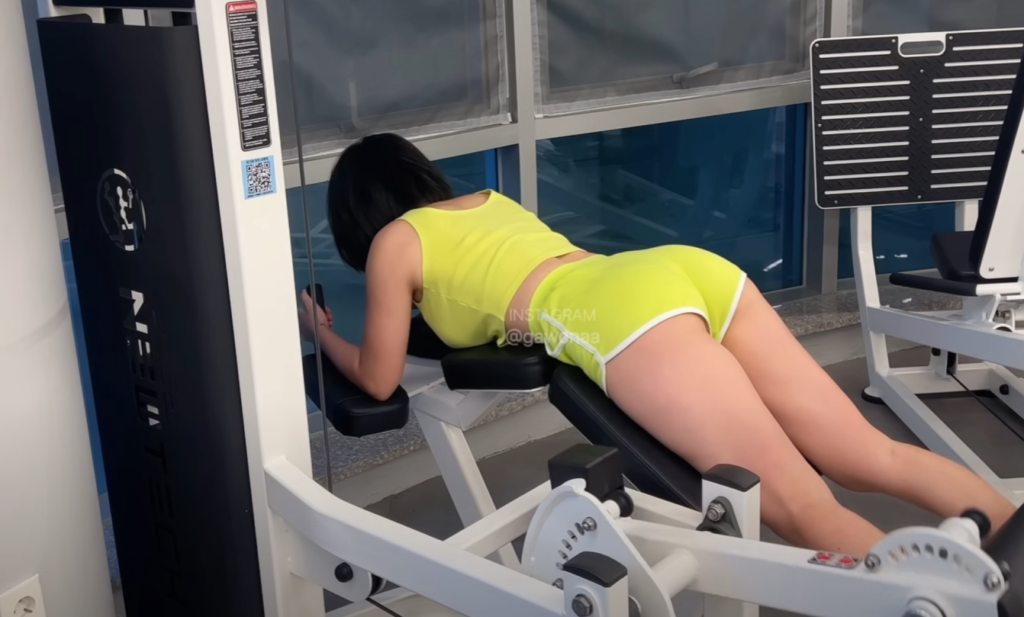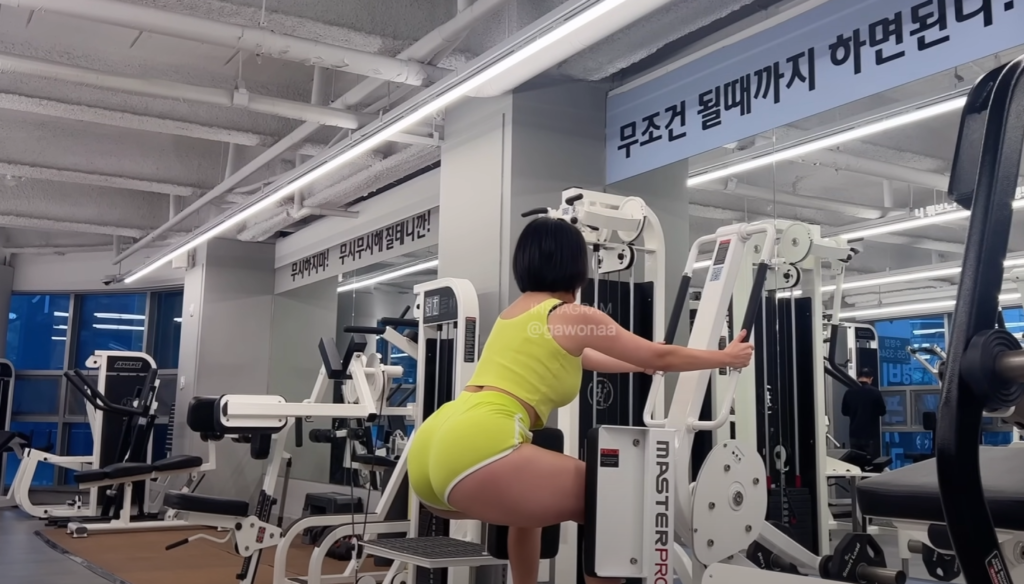For many gym enthusiasts, stretching is an essential part of their fitness routine. But what happens after stretching? How does a good warm-up affect your workout performance? If you’re a gym girl dedicated to sculpting your body and increasing your strength, understanding the connection between stretching and exercise is key to maximizing results

Why Stretch Before a Workout?
Stretching is not just about loosening up your muscles; it’s a crucial part of injury prevention and performance enhancement. When done correctly, stretching helps increase flexibility, improve blood circulation, and prepare your muscles for the intense work ahead.
Benefits of Pre-Workout Stretching
- Increases Blood Flow: Stretching before exercising promotes better circulation, which helps deliver oxygen and nutrients to your muscles.
- Reduces Risk of Injury: Dynamic stretching, in particular, helps warm up the muscles and joints, reducing the likelihood of strains and sprains.
- Enhances Performance: Loosening up tight muscles allows for better movement, improved range of motion, and greater strength during lifts.
- Mental Preparation: Stretching also provides a moment to focus, setting the right mindset before hitting the gym floor.

Dynamic vs. Static Stretching: What’s Better?
Not all stretches are created equal. Depending on the timing and type of workout you’re planning, the type of stretching you do matters.
Dynamic Stretching Before Workouts
Dynamic stretches involve movement and are best suited for pre-workout warm-ups. They activate muscles and increase heart rate gradually. Some excellent dynamic stretches include:
- Leg Swings – Stand and swing one leg forward and backward to activate hip flexors.
- Arm Circles – Rotate arms in circular motions to loosen the shoulder joints.
- Lunges with Twists – Step forward into a lunge while twisting your torso to engage the core.
- High Knees – A cardio-based movement that also stretches the hamstrings.

Static Stretching for Cool-Down
Static stretching involves holding a position for a prolonged period and is best suited for post-workout recovery. Some effective static stretches include:
- Seated Forward Bend – Stretches the hamstrings and lower back.
- Butterfly Stretch – Targets the inner thighs and hips.
- Quad Stretch – Pulling your foot toward your glutes helps stretch the quadriceps.
- Triceps Stretch – Helps loosen up the arms after an upper-body workout.

What Happens When You Work Out After Stretching?
Once you’ve completed a solid stretching routine, your body is primed and ready to take on an effective workout. Here’s what you should focus on next:
1. Strength Training After Stretching
A well-stretched body can perform strength exercises more effectively. Here’s how stretching benefits weightlifting:
- Improved Range of Motion – Greater flexibility allows for deeper squats, better deadlifts, and improved press mechanics.
- Better Muscle Activation – Pre-stretched muscles engage more effectively, leading to better strength gains.
- Reduced Muscle Stiffness – Warm muscles contract and relax more efficiently, allowing for smoother and safer movements.

For example, if you are working on leg day, stretching your hamstrings and quads beforehand can lead to better squats and lunges. If you’re focusing on upper body strength, stretching your shoulders and arms will allow for more controlled bench presses and overhead lifts.
2. Cardiovascular Exercise After Stretching
If you’re planning a cardio session, stretching beforehand can make a big difference:
- Reduces Risk of Cramps – Properly stretched muscles are less likely to cramp during long runs or cycling sessions.
- Enhances Endurance – Loosening up your joints can improve efficiency in running and other cardio activities.
- Better Posture & Breathing – A flexible body allows for better posture, which improves lung capacity and breathing efficiency.

For example, if you’re doing treadmill running, performing leg swings and hip openers beforehand helps your stride feel more natural. If you’re hopping on the stair climber, stretching your calves will prevent tightness during climbs.
3. Yoga and Pilates After Stretching
For gym girls who love yoga or Pilates, stretching before class can help deepen poses and improve flexibility. Stretching before low-impact exercises like yoga enhances the body’s ability to hold poses longer and perform transitions more fluidly.

Common Mistakes to Avoid
Even though stretching is incredibly beneficial, some mistakes can reduce its effectiveness or even lead to injury:
1. Holding Stretches for Too Long Before Lifting
While static stretching is great for cooling down, holding long stretches before strength training can actually weaken your muscles temporarily. Instead, stick to dynamic stretches before lifting weights.
2. Skipping the Warm-Up
Stretching is not the same as warming up! Your body needs movement-based warm-ups like jumping jacks or light jogging to fully prepare for a workout.
3. Stretching Cold Muscles
Stretching without any prior movement can lead to strains. Always do some light movement first, like arm swings or bodyweight squats, before deeper stretching.
4. Ignoring Muscle Imbalances
Make sure to stretch all major muscle groups evenly. Overstretching one area while ignoring another can lead to imbalances that affect your posture and performance.

The Best Post-Workout Recovery Routine
Once you’ve crushed your workout, don’t forget to cool down and stretch again. This helps reduce muscle soreness and improve recovery. Try these steps:
- Foam Rolling – Helps relieve muscle tightness and improves blood circulation.
- Deep Breathing – Focus on slow, deep breaths to bring your heart rate back to normal.
- Hydration & Nutrition – Replenish lost fluids and eat protein-rich foods for muscle recovery.
- Gentle Static Stretching – Hold stretches for 20-30 seconds to help muscles relax.

Final Thoughts
For gym girls looking to optimize their fitness routine, stretching before a workout is a game-changer. Whether you’re lifting heavy, running miles, or flowing through yoga poses, stretching helps unlock greater flexibility, strength, and performance. Just remember to balance dynamic stretches before working out and static stretches afterward for the best results.

By incorporating proper stretching techniques into your fitness journey, you’ll not only prevent injuries but also maximize your potential in the gym. So, stretch, sweat, and slay every workout like the gym queen you are! 💪🔥




